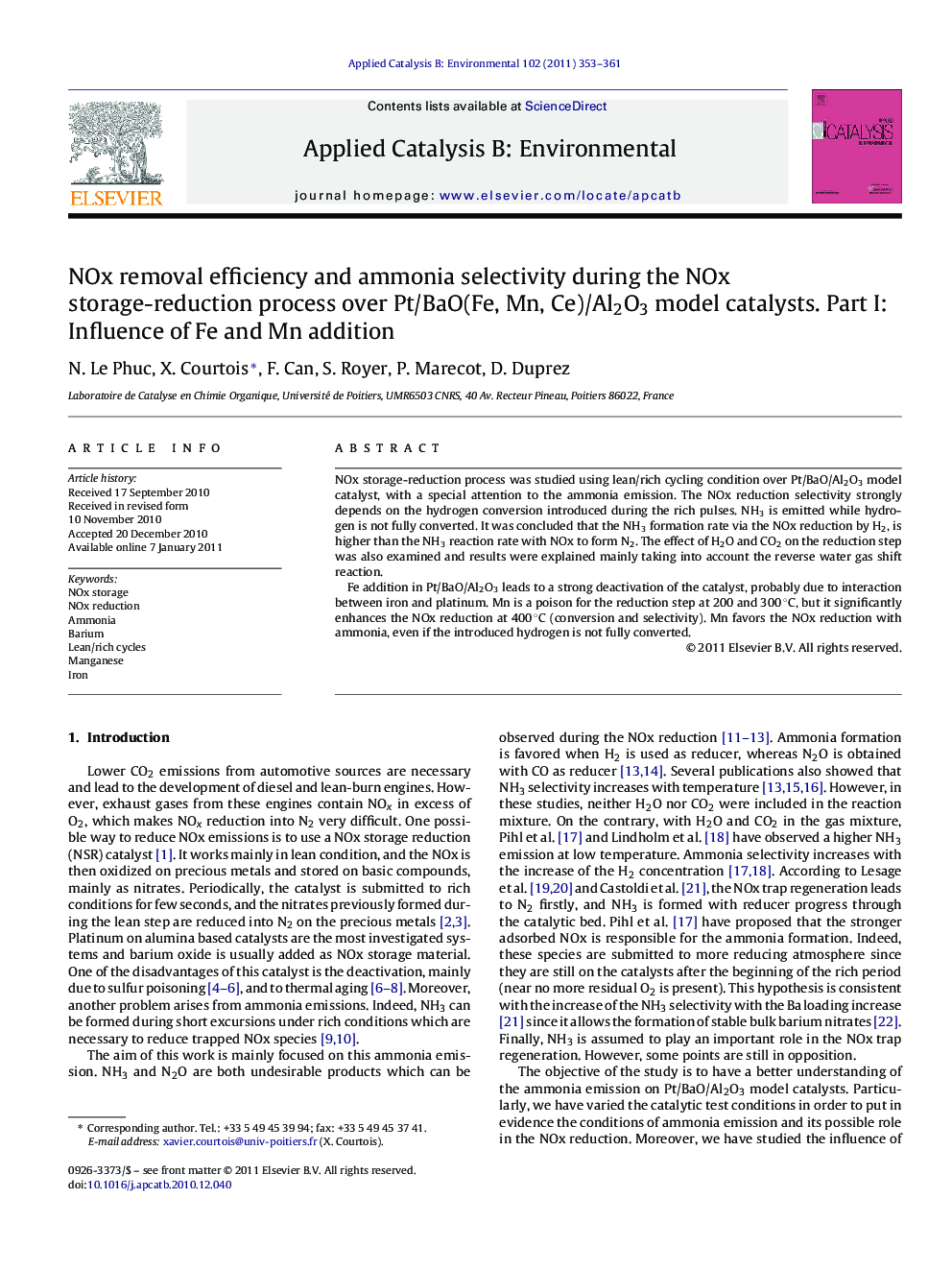| Article ID | Journal | Published Year | Pages | File Type |
|---|---|---|---|---|
| 47098 | Applied Catalysis B: Environmental | 2011 | 9 Pages |
NOx storage-reduction process was studied using lean/rich cycling condition over Pt/BaO/Al2O3 model catalyst, with a special attention to the ammonia emission. The NOx reduction selectivity strongly depends on the hydrogen conversion introduced during the rich pulses. NH3 is emitted while hydrogen is not fully converted. It was concluded that the NH3 formation rate via the NOx reduction by H2, is higher than the NH3 reaction rate with NOx to form N2. The effect of H2O and CO2 on the reduction step was also examined and results were explained mainly taking into account the reverse water gas shift reaction.Fe addition in Pt/BaO/Al2O3 leads to a strong deactivation of the catalyst, probably due to interaction between iron and platinum. Mn is a poison for the reduction step at 200 and 300 °C, but it significantly enhances the NOx reduction at 400 °C (conversion and selectivity). Mn favors the NOx reduction with ammonia, even if the introduced hydrogen is not fully converted.
Graphical abstractFigure optionsDownload full-size imageDownload as PowerPoint slideResearch highlights▶ NOx storage-reduction over Pt/Ba(Fe, Mn)/Al catalysts. ▶ NH3 selectivity depends on the H2 conversion introduced during the rich pulses. ▶ The in situ produced NH3 can react with the stored NOx over Pt/Ba(Mn)/Al. ▶ Mn addition improves the NH3 + NOx reaction at 400 °C. ▶ Fe addition induces a catalyst deactivation.
